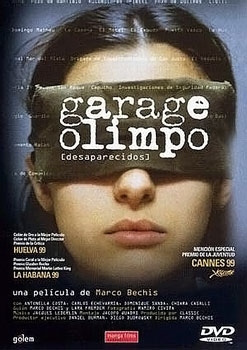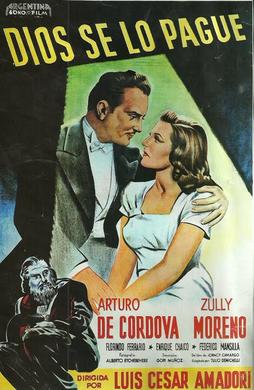
Tango is a partner dance and social dance that originated in the 1880s along the Río de la Plata, the natural border between Argentina and Uruguay. The tango was born in the impoverished port areas of these countries from a combination of Argentine Milonga, Spanish-Cuban Habanera, and Uruguayan Candombe celebrations. It was frequently practiced in the brothels and bars of ports, where business owners employed bands to entertain their patrons. It then spread to the rest of the world. Many variations of this dance currently exist around the world.

Sinesio Baudillo García Fernández, commonly known by his pseudonym Diego Abad de Santillán, was a Spanish Argentine anarcho-syndicalist economist. Born in León, his family moved to Argentina while he was young. He returned to Spain for his higher education and became involved in the Spanish anarchist movement. After his studies, he went back to Argentina and became involved with the Argentine Regional Workers' Federation (FORA), co-founding the International Workers' Association (IWA). Following the 1930 Argentine coup d'état and the establishment of the Second Spanish Republic, he again went to Spain, becoming involved in the Iberian Anarchist Federation (FAI). During the Spanish Civil War, he served in the Catalan government as Minister of Economy. After the war, he returned to Argentina and largely ceased political activities, going back to Spain only after the Spanish transition to democracy.

The Official Story is a 1985 Argentine historical drama film directed by Luis Puenzo and written by Puenzo and Aída Bortnik. It stars Norma Aleandro, Héctor Alterio, Chunchuna Villafañe and Hugo Arana. In the United Kingdom, it was released as The Official Version.

Natalia Marisa Oreiro Iglesias is a Uruguayan actress, singer, songwriter, model, television presenter and fashion designer. Oreiro began her career in telenovelas. Since 2008 she has switched to work primarily in films. Oreiro has worked on social awareness shows and events for organizations like Greenpeace and UNICEF, the latter of which designated her as ambassador for Argentina and Uruguay in September 2011. She has been included in Esquire magazine's "The Sexiest Woman Alive" list.

Libertad Lamarque Bouza was an Argentine actress and singer, one of the icons of the Golden Age of Argentine and Mexican cinema. She achieved fame throughout Latin America, and became known as "La Novia de América". By the time she died in 2000, she had appeared in 65 films and six telenovelas, had recorded over 800 songs and had made innumerable theatrical appearances.

Cinema of Argentina refers to the film industry based in Argentina. The Argentine cinema comprises the art of film and creative movies made within the nation of Argentina or by Argentine filmmakers abroad.

Ricardo Alberto Darín is an Argentine actor, film director and film producer, considered one of the best and most prolific actors of Argentine cinema.
Latin American cinema refers collectively to the film output and film industries of Latin America. Latin American film is both rich and diverse, but the main centers of production have been Argentina, Brazil and Mexico. Latin American cinema flourished after the introduction of sound, which added a linguistic barrier to the export of Hollywood film south of the border.
Patagonik Film Group is an Argentine production company, dedicated to the making of feature films and film production services. A part of the Clarín Group, Patagonik Film Group also assists in the production of international films that want to film in Argentina.

Leonardo Máximo Sbaraglia is an Argentine actor, with extensive credits in both Argentina and Spain. He has also worked in Mexico, and was cast in his first English-language role in Red Lights.
This is an index to pages listing Argentine films ordered by year of release. For an A-Z list, see Category:Argentine films.

Cinenacional.com is a web portal and web-based database about Argentine cinema. It is the most comprehensive site for information about the Argentine film industry, with a vast array of information on films, television programs, directors, actors, cinematographers, film editors, production designers, and film viewing figures. As of July 2022 it has 53,567 articles on films in its database, 11,074 technical data sheets, and 25,478 photos. The site receives an average of 18,000 views a day.

Verónico Cruz is a 1988 Argentine and British drama film. The motion picture is directed by Miguel Pereira, his first, and written by Pereira and Eduardo Leiva Muller. The movie was produced by Julio Lencina and Sasha Menocki and features Juan José Camero, Gonzalo Morales, among others. The author of the book, Fortunato Ramos, appears in the film in the opening scenes as Verónico's father.

Olympic Garage is a 1999 Argentine political thriller, directed by Marco Bechis.

God Reward You is a 1948 Argentine drama film directed by Luis César Amadori and starring Arturo de Córdova and Zully Moreno. It won the Silver Condor Award for Best Film, given by the Argentine Film Critics Association in 1949 for the best picture of the previous year.

Gatica, el mono is a 1993 Argentine drama film directed by Leonardo Favio. It is a biopic of Argentine boxer José María Gatica.
It won the Silver Condor for Best Film. It was selected as the Argentine entry for the Best Foreign Language Film at the 66th Academy Awards, but Leonardo Favio asked the Instituto Nacional de Cinematografía (INC) to remove it as a nominee in order to protest in delays of the Congress' approval of the Foreign Films taxes.

A Place in the World is a 1992 Argentine drama film co-written, co-produced and directed by Adolfo Aristarain, and starring Federico Luppi. It stars José Sacristán, Federico Luppi, Leonor Benedetto and Cecilia Roth.

Argentina, officially the Argentine Republic, is a country in the southern half of South America. Argentina covers an area of 2,780,400 km2 (1,073,500 sq mi), making it the second-largest country in South America after Brazil, the fourth-largest country in the Americas, and the eighth-largest country in the world. It shares the bulk of the Southern Cone with Chile to the west, and is also bordered by Bolivia and Paraguay to the north, Brazil to the northeast, Uruguay and the South Atlantic Ocean to the east, and the Drake Passage to the south. Argentina is a federal state subdivided into twenty-three provinces, and one autonomous city, which is the federal capital and largest city of the nation, Buenos Aires. The provinces and the capital have their own constitutions, but exist under a federal system. Argentina claims sovereignty over the Falkland Islands, South Georgia and the South Sandwich Islands, the Southern Patagonian Ice Field, and a part of Antarctica.

Tangos, the Exile of Gardel is an Argentine-French film released on 20 March 1986, directed by Fernando Solanas, starring Marie Laforêt, Miguel Ángel Solá and Philippe Leotard. The film was selected as the Argentine entry for the Best Foreign Language Film at the 59th Academy Awards, but was not accepted as a nominee.
Savage Pampas is a 1945 Argentine historical film directed by Lucas Demare and Hugo Fregonese and starring Francisco Petrone, Luisa Vehil and Domingo Sapelli. The film's sets were designed by Germán Gelpi. The film is set in the nineteenth century in the Dry Pampas, when it represented a frontier between Argentinian-controlled territory and areas still largely inhabited by Indians before the Conquest of the Desert extended Argentine control southwards. In 1966, Fregonese remade the film in English under the same title.